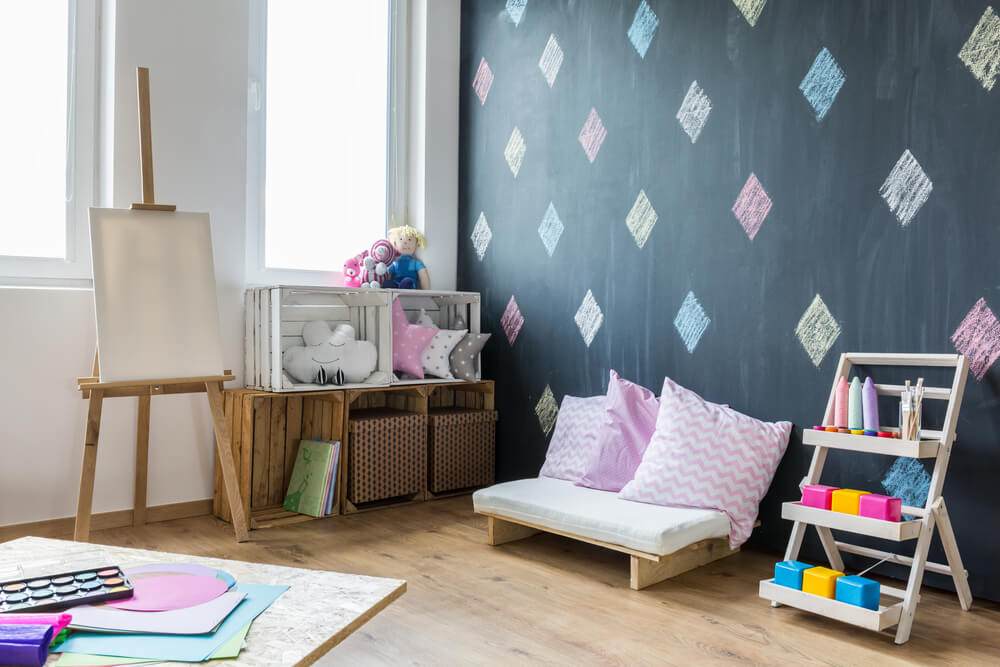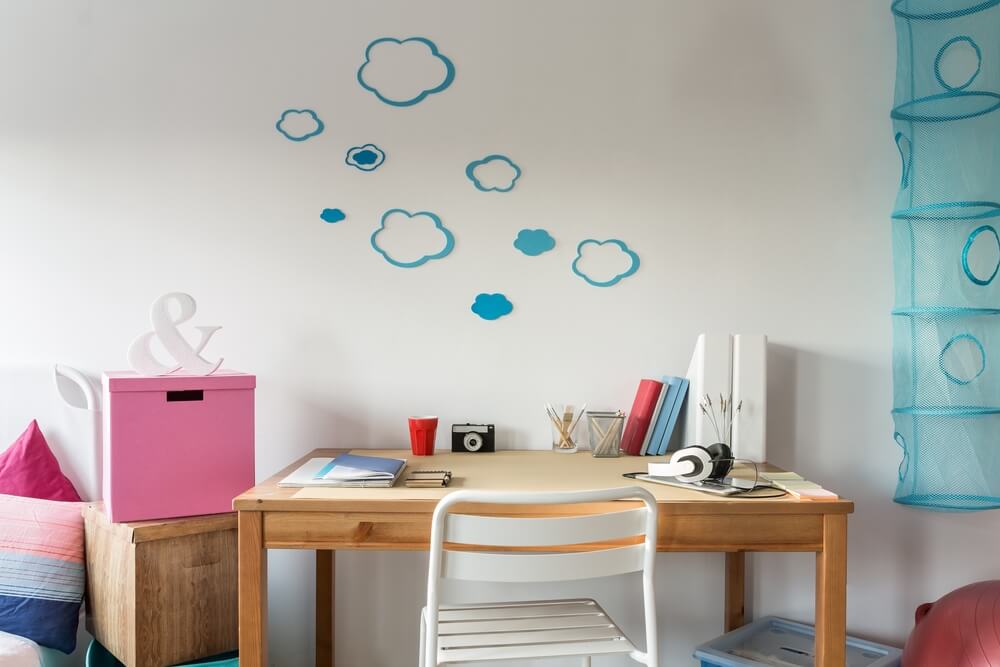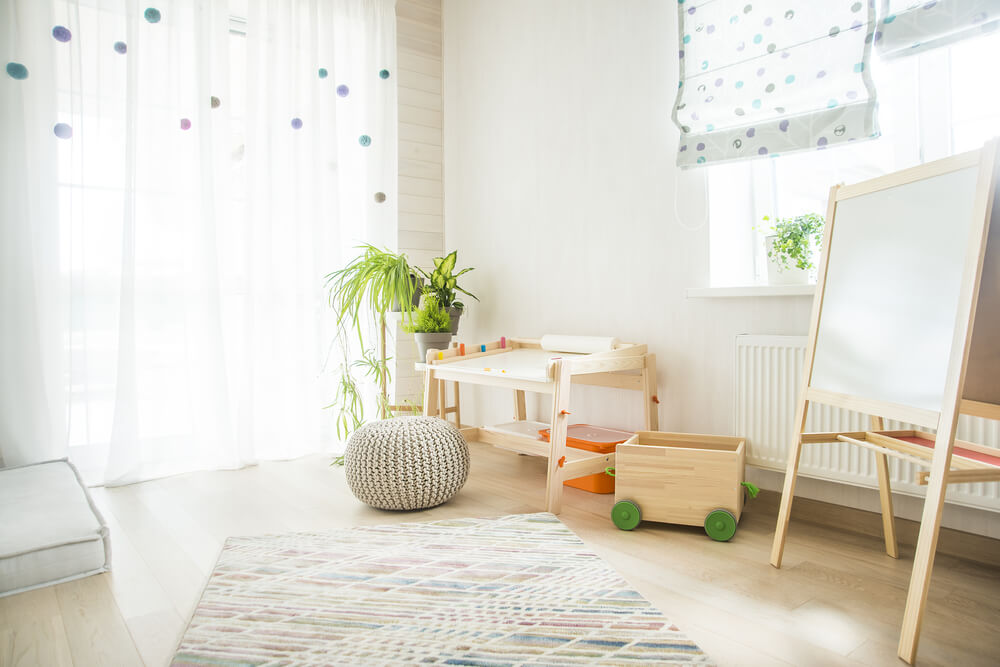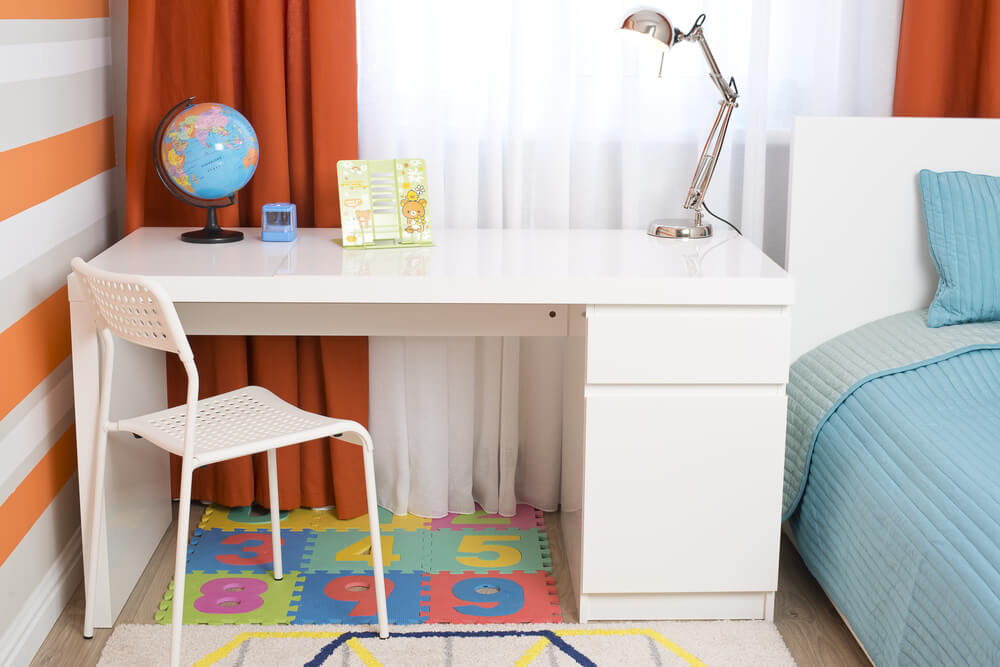Create a Children's Study Area: Fast and Easy

If you’re not sure how to make a children’s study area, check out our ideas in today’s post. They’ll help you create a space where children can develop good study habits.
Creating a practical and functional space where children can really feel comfortable is important. They’ll be spending a good amount of time here. Even if you’re working with a small space, good organization will be enough to get the job done.
Though some people choose to leave a small area for their children in their study or office, giving children their own space is ideal.
In our post today, we have some ideas and advice on certain aspects that you should have in mind for creating a great study area for children.
A study area that’s age-appropriate

Decorating for a 3-year-old is definitely not the same as decorating for an 8-year-old. The former won’t have homework, but instead, could use the space to draw or even play.
You could try using a soft rug or some pillows on the floor to keep your kids warm as they play. Having storage space to put away toys, materials, and books, etc. is also very important.
Pick out low furniture pieces so that your children can get used to doing their activities independently. They spend hours on end here, so you can opt for a little plastic table and stools, like the MAMMUT collection at IKEA.

You’ll need to change the furniture a bit to set up an area for older children that have homework. For these age groups, a desk is indispensable in addition to a bookcase and a good chair to prevent poor posture and aches.
Let’s take a closer look at tables and chairs. You can find them in various sizes for different age groups. There are also options that can change as kids grow. Here’s an example from the store Imaginarium (link in Spanish).
Try to save space

These days a lot of homes are short on space. So, making the most of every centimeter without making thing too busy is key.
For example, if your child won’t use the table often, you can go with a wall-mounted folding option. Some people choose structures that have a bed on top and a desk and shelving unit on the bottom. Folding chairs are another great option.
If you’re decorating for a very young child, look for stools that can tuck underneath the table. Shelves (floating shelves will work well if you don’t have enough space for an entire unit), and a desk with drawers or a chest of drawers will be essential.

If your children share a study room, lay out the room carefully to make the most of the space. Consider setting up the desks in front of each other or side-by-side. Or, set a large board on top of two sets of legs, making sure that it’s secure to prevent accidents.
For school supplies, try buying jars, baskets or boxes to keep them organized and always within arm’s reach. Transparent containers will make it easier to find things.
Prioritize good lighting

Lastly, we want to talk about a basic, yet important aspect – lighting. If possible, arrange the desk as close as you can to a window, or natural light.
Even with a good source of natural light, you’ll need to add artificial light sources as well. Place a flex lamp on the left side of the desk to prevent your child from casting a shadow onto his or her work space.
If space is an issue, you can mount a lamp on the wall instead. Or, if the desk has a pegboard for hanging items, use it to hang a lamp.
For older children, try using a standing lamp for their study area. And for the younger ones, remember to look for fun, colorful models.
As you’ve read today, creating a study area for children isn’t hard. You just need to look carefully at the layout, making the most of the space while furnishing with practicality and functionality in mind.
If you’re not sure how to make a children’s study area, check out our ideas in today’s post. They’ll help you create a space where children can develop good study habits.
Creating a practical and functional space where children can really feel comfortable is important. They’ll be spending a good amount of time here. Even if you’re working with a small space, good organization will be enough to get the job done.
Though some people choose to leave a small area for their children in their study or office, giving children their own space is ideal.
In our post today, we have some ideas and advice on certain aspects that you should have in mind for creating a great study area for children.
A study area that’s age-appropriate

Decorating for a 3-year-old is definitely not the same as decorating for an 8-year-old. The former won’t have homework, but instead, could use the space to draw or even play.
You could try using a soft rug or some pillows on the floor to keep your kids warm as they play. Having storage space to put away toys, materials, and books, etc. is also very important.
Pick out low furniture pieces so that your children can get used to doing their activities independently. They spend hours on end here, so you can opt for a little plastic table and stools, like the MAMMUT collection at IKEA.

You’ll need to change the furniture a bit to set up an area for older children that have homework. For these age groups, a desk is indispensable in addition to a bookcase and a good chair to prevent poor posture and aches.
Let’s take a closer look at tables and chairs. You can find them in various sizes for different age groups. There are also options that can change as kids grow. Here’s an example from the store Imaginarium (link in Spanish).
Try to save space

These days a lot of homes are short on space. So, making the most of every centimeter without making thing too busy is key.
For example, if your child won’t use the table often, you can go with a wall-mounted folding option. Some people choose structures that have a bed on top and a desk and shelving unit on the bottom. Folding chairs are another great option.
If you’re decorating for a very young child, look for stools that can tuck underneath the table. Shelves (floating shelves will work well if you don’t have enough space for an entire unit), and a desk with drawers or a chest of drawers will be essential.

If your children share a study room, lay out the room carefully to make the most of the space. Consider setting up the desks in front of each other or side-by-side. Or, set a large board on top of two sets of legs, making sure that it’s secure to prevent accidents.
For school supplies, try buying jars, baskets or boxes to keep them organized and always within arm’s reach. Transparent containers will make it easier to find things.
Prioritize good lighting

Lastly, we want to talk about a basic, yet important aspect – lighting. If possible, arrange the desk as close as you can to a window, or natural light.
Even with a good source of natural light, you’ll need to add artificial light sources as well. Place a flex lamp on the left side of the desk to prevent your child from casting a shadow onto his or her work space.
If space is an issue, you can mount a lamp on the wall instead. Or, if the desk has a pegboard for hanging items, use it to hang a lamp.
For older children, try using a standing lamp for their study area. And for the younger ones, remember to look for fun, colorful models.
As you’ve read today, creating a study area for children isn’t hard. You just need to look carefully at the layout, making the most of the space while furnishing with practicality and functionality in mind.







